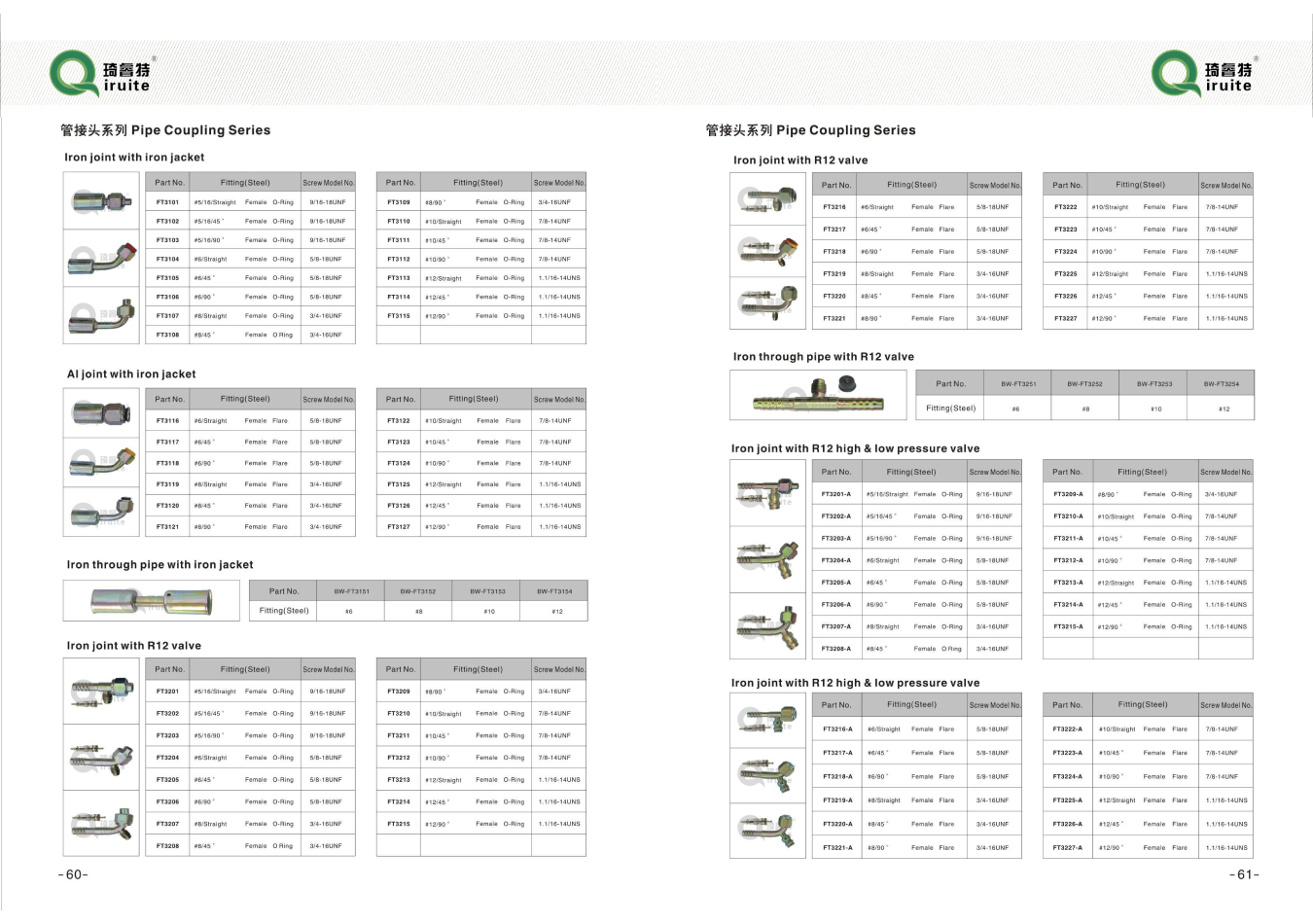repair power steering pipe
Repairing Power Steering Pipes A Comprehensive Guide
Power steering systems have become an indispensable feature in modern vehicles, allowing for enhanced maneuverability and ease of driving. One critical component of this system is the power steering pipe. If you experience issues related to your power steering—such as difficulty in steering, fluid leaks, or warning lights on your dashboard—it might be time to take a closer look at your power steering pipes. This article will delve into the repair process for power steering pipes, highlighting common problems, symptoms of failure, and step-by-step guidance for carrying out repairs.
Understanding Power Steering Pipes
Power steering pipes are tubes that facilitate the flow of hydraulic fluid between the power steering pump and the steering gear. These pipes are typically made of either rubber or metal and can be susceptible to wear and tear over time. Factors such as corrosion, excessive heat, or physical damage can lead to leaks or blockages, impairing the power steering system's functionality.
Common Symptoms of Power Steering Pipe Issues
1. Fluid Leaks One of the most noticeable signs of a problem is the presence of power steering fluid pooling under the vehicle. This can often be traced back to a compromised power steering pipe. 2. Difficulty Steering If you find that turning the steering wheel requires more effort than usual, or if it feels sticky, this could indicate that your power steering system is not receiving adequate hydraulic fluid due to a leak.
3. Noisy Steering Unusual sounds such as whining or grinding when turning the steering wheel can be an indicator of low fluid levels in the power steering system, often resulting from a leak in the pipes.
4. Warning Lights Many modern vehicles are equipped with sensors that trigger warning lights on the dashboard when the power steering system is not operating correctly.
Repairing Power Steering Pipes
If you identify any of the above symptoms, it is crucial to address the issue promptly. Here is a detailed guide on how to repair your power steering pipes
1. Gather the Necessary Tools and Materials
Before beginning the repair, make sure you have the following tools and materials
- Wrenches or sockets - Screwdrivers - Power steering fluid - Replacement pipes or hose (if necessary) - Clean rags - Hydraulic jack and stands (for elevating the vehicle safely)
2. Safety First
Ensure that the vehicle is parked on a level surface, the ignition is off, and the keys are removed from the ignition. If necessary, use a hydraulic jack to lift the vehicle and secure it with stands.
repair power steering pipe

3. Identify the Problem Area
Inspect the power steering pipes for signs of wear, damage, or leakage. A visual inspection can often reveal cracks or holes where fluid might be escaping. If a specific section of the pipe appears damaged, you may need to replace that segment with a new one.
4. Drain the Power Steering Fluid
Before starting the repair, it is essential to drain the power steering fluid. Locate the reservoir and use a turkey baster or siphon pump to remove the fluid. This will prevent any spillage during the repair process.
5. Remove the Damaged Pipe
Using your wrenches or sockets, loosen the connectors on both ends of the damaged power steering pipe. Carefully remove the pipe, ensuring that no debris falls into the system.
6. Install the New Pipe
Once the old pipe is removed, install the new one by reversing the removal process. Ensure that all connections are tight to prevent future leaks.
7. Refill Power Steering Fluid
After the new pipe is installed, refill the power steering reservoir with fresh power steering fluid. Ensure to consult your vehicle manual to find the correct type of fluid required for your specific make and model.
8. Check for Leaks
Start the engine and turn the steering wheel from lock to lock a few times. This will help circulate the new fluid and expel any air pockets. After running the engine for a few minutes, inspect the area around the new pipe for any leaks.
Conclusion
Repairing power steering pipes is an essential aspect of vehicle maintenance that ensures optimal steering performance. By being aware of the signs of failure and understanding the repair process, you can manage your vehicle's power steering system effectively. If you're uncertain about carrying out the repairs yourself, don't hesitate to consult a professional mechanic. Keeping your power steering system in good condition will not only enhance your driving experience but also ensure your safety on the road.
-
Ultimate Spiral Protection for Hoses & CablesNewsJun.26,2025
-
The Ultimate Quick-Connect Solutions for Every NeedNewsJun.26,2025
-
SAE J1401 Brake Hose: Reliable Choice for Safe BrakingNewsJun.26,2025
-
Reliable J2064 A/C Hoses for Real-World Cooling NeedsNewsJun.26,2025
-
Heavy-Duty Sewer Jetting Hoses Built to LastNewsJun.26,2025
-
Fix Power Steering Tube Leaks Fast – Durable & Affordable SolutionNewsJun.26,2025

